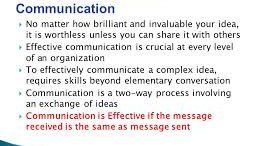
When it comes to learning new concepts or exploring unfamiliar terms, “” is a keyword that demands attention. Whether you’ve stumbled upon this word in a specific context or you’re curious about its broader implications, this article provides a comprehensive and SEO-optimized insight into . Through detailed exploration, we will cover the meaning, applications, and relevant details surrounding this intriguing term, ensuring you gain a well-rounded understanding that can be applied in various fields.
What is Cevurı? — Definition and Origin
To start, is a term that originates from the Turkish language, where it is commonly associated with the concept of “translation” or “conversion.” In essence, refers to the process of transforming one form of information, language, or data into another, maintaining its original meaning while adapting it for a different medium or audience. This makes it a vital component in communication, technology, and education.
The term can be broken down linguistically as well: derived from the verb “çevir,” which means “to turn” or “to translate,” acts as a noun form implying the act or result of such transformation.
The Importance of Cevurı in Modern Communication
In our increasingly globalized world, has become more relevant than ever. The ability to accurately and efficiently convert information across languages and formats supports international collaboration, business, and cultural exchange. The quality of affects how well people understand each other across language barriers and technical systems.

For instance, professional translators and interpreters rely heavily on the concept of cevurı to bridge language gaps, ensuring ideas and nuances are preserved. Similarly, in digital environments, software developers create algorithms that perform automatic between programming languages or data formats, facilitating seamless integration and communication
Different Types of Cevurı
is not a one-size-fits-all process; it varies widely depending on the context. Here are five major types of commonly encountered:
- Linguistic : Translation between different human languages.
- Technical : Conversion of data or code from one format to another.
- Cultural : Adapting content to fit cultural norms while retaining meaning.
- Visual : Transforming ideas into visual representations like infographics or diagrams.
- Audio-Visual : Subtitling and dubbing in films or media for different audiences.
Each type requires specific skills and tools, highlighting the multifaceted nature of .
The Process of Cevurı: Step-by-Step
To better understand how works, it’s helpful to break down the typical steps involved:
- Analysis: Understanding the source material or language.
- Interpretation: Grasping the intended meaning and context.
- Transformation: Converting content into the target form or language.
- Adaptation: Adjusting style or format to suit the target audience.
- Review: Proofreading and quality checking for accuracy.
This structured approach ensures that the result of is faithful and effective.
Challenges in and How to Overcome Them

While is indispensable, it is not without challenges. Some common obstacles include:
- Language Nuances: Idioms and cultural references can be difficult to translate.
- Technical Limitations: Software translation tools may lack contextual understanding.
- Loss of Meaning: Some expressions may not have direct equivalents.
- Formatting Issues: Converting multimedia content requires precision.
- Time Constraints: Quality often demands significant time investment.
Overcoming these hurdles requires expertise, technology, and sometimes collaboration between human translators and machines.
The Role of Technology in Modern Cevurı
Technological advancements have transformed processes dramatically. Machine translation engines like Google Translate utilize AI to perform instantaneous linguistic . Similarly, specialized software can automatically convert file formats or subtitles, streamlining audio-visual .
Nevertheless, technology often supplements rather than replaces human input, especially for complex or sensitive content, ensuring cultural nuances and context are respected.
Applications of in Different Fields
The concept of finds practical use across many sectors, including:
- Education: Translating textbooks and academic materials for global students.
- Business: Localizing marketing campaigns to target new demographics.
- Healthcare: Converting patient information into multiple languages for better care.
- Entertainment: Dubbing and subtitling films and series for international audiences.
- Technology: Programming language translation and data format conversion.
Its wide applicability makes understanding cevurı a valuable skill for professionals in many domains.
How to Improve Your Skills
Whether you are a professional translator or just interested in the concept, here are five tips to enhance your cevurı abilities:
- Build strong language proficiency.
- Understand cultural contexts deeply.
- Utilize reliable translation and conversion tools.
- Practice interpreting complex texts.
- Seek feedback and continuously improve.
Developing these skills can improve both the accuracy and creativity of your cevurı work.
Cevurı in Education and Learning
In education, cevurı plays a critical role in making knowledge accessible. Educational materials, lectures, and digital content often require translation to cater to diverse learners worldwide. Effective ensures that language barriers do not hinder learning opportunities, fostering inclusivity.
Teachers and curriculum developers often rely on specialists to adapt resources accurately, especially in multilingual environments.
Future Trends in Cevurı
Looking ahead, is set to evolve with emerging technologies. Artificial Intelligence and neural networks will increasingly refine translation accuracy and context sensitivity. Augmented reality (AR) and virtual reality (VR) could also create immersive translation environments.
Additionally, the demand for real-time, on-the-go in mobile devices and wearables is expected to grow, further integrating the concept into daily communication.
The Cultural Significance of Cevurı
Beyond its technical aspects, cevurı holds cultural importance. It enables the sharing of stories, traditions, and knowledge across borders, promoting understanding and empathy. Proper cevurı respects and preserves the unique identities within translated content, rather than erasing differences.
Thus, cevurı acts as a bridge connecting diverse human experiences.
Summary: Why Cevurı Matters
In summary, is more than just translation—it is a complex, multifaceted process essential for effective communication in a diverse and digital world. Its applications span languages, cultures, technologies, and industries, making it a fundamental skill and concept.
With the help of evolving technologies and human expertise, continues to break down barriers, enabling knowledge exchange and global connection.
Conclusion
Understanding is crucial for anyone navigating today’s interconnected world. Whether you are involved in language services, digital media, education, or international business, mastering the principles and applications of can dramatically improve communication and collaboration. As technology advances, the integration of human insight and automated tools will make more efficient and accurate, opening new possibilities for global interaction. Embracing this process will empower individuals and organizations to bridge divides and foster inclusive dialogue everywhere.
FAQs about Cevurı
Q1: What is the difference between cevurı and translation?
A1: Cevurı broadly refers to the act of converting information from one form or language to another, while translation specifically refers to converting text or speech between languages.
Q2: Can machines fully replace human cevurı?
A2: While machines assist greatly, human input is still vital to capture nuances, cultural context, and idiomatic expressions that AI may miss.
Q3: How can I start learning cevurı professionally?
A3: Begin by mastering languages, understanding cultural contexts, practicing translation skills, and using relevant software tools. Formal education in translation studies can also be beneficial.
Also Read This: Price Charalabush





